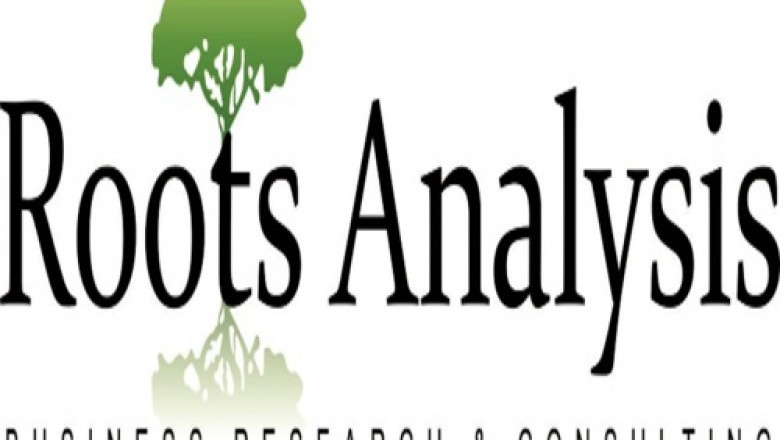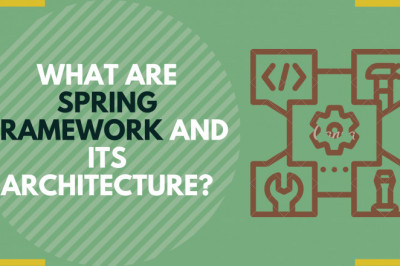views

To order thisdetailed 600+ page report, please visit this link
Key Inclusions
§ A detailed assessment of the current market landscape ofADCs, providing information on drug developer(s) and technology provider(s),phase of development (marketed, clinical and preclinical / discovery stage) oflead candidates, target antigen, type of linker, type of payload / warhead /cytotoxin, type of antibody, antibody origin, antibody isotype, type of therapy(monotherapy and combination therapy), combination drug (if being evaluated ascombination therapy), target indication(s), line of treatment, route ofadministration and dosing frequency.
§ Elaborate profiles of the clinical stage companies(shortlisted based on phase of development of the lead drug) and theirrespective product portfolios; each profile features an overview of thecompany, its financial information (if available), detailed information onadvanced stage pipeline candidates (featuring a drug overview, clinicaldevelopment plan and key clinical trial results) and an informed futureoutlook.
§ An analysis of the most commonly targeted therapeuticindications and details of ADC candidates being developed against them,highlighting key epidemiological facts about the diseases and currentlyavailable treatment options, other than ADCs.
§ A list of key opinion leaders (KOLs) within this domain,featuring detailed 2X2 matrices to assess the relative experience of keyindividuals, who were shortlisted based on their contributions (in terms ofinvolvement in various clinical studies) to this field. It also includes aschematic world map representation, highlighting the geographical locations ofeminent scientists / researchers engaged in this domain. In addition, itpresents an analysis assessing the credibility and (relative) level ofexpertise of different KOLs, based on number of publications, number ofcitations, number of clinical trials, number of affiliations and strength ofprofessional network (based on information available on LinkedIn).
§ An insightful competitiveness analysis of biologicaltargets, featuring a [A] three-dimensional bubble representation thathighlights the targets that are being evaluated for ADC development, takinginto consideration the number of lead molecules based on a particular target,phase of development of candidate therapies, number of clinical trials andnumber of target disease indications, and [B] a five-dimensional spider-webanalysis, highlighting the most popular biological targets based on a number ofrelevant parameters, including affiliated publications, grants received tosupport research on a particular target, number of industry players involved indrug development efforts based on a singular target and geographicaldistribution of associated clinical trials.
§ An analysis of the partnerships that have been establishedin the recent past, covering R&D collaborations, licensing agreements(specific to technology platforms and product candidates), product developmentand commercialization agreements, clinical trial agreements, manufacturingagreements, mergers and acquisitions, manufacturing and service agreements, andother relevant agreements.
§ An analysis of the investments made, including seed financing,venture capital financing, debt financing, grants, capital raised from IPOs andsubsequent offerings, at various stages of development in companies that arefocused on developing ADCs.
§ An in-depth analysis of the various patents that have beenfiled / granted related to ADCs till May 2019. It includes information on keyparameters, such as patent type, publication year, geographical location,issuing authority, assigned CPC symbol, emerging focus areas and leadingindustry / academic players (in terms of size of intellectual propertyportfolio). It also includes a patent benchmarking analysis and a detailedvaluation analysis.
§ A study of the various grants that have been awarded toresearch institutes engaged in projects related to ADCs, between 2011 and 2019(till April), highlighting various important parameters, such as year of award,support period, amount awarded, funding institute, grant type, focus area, typeof recipient organization, key project leaders, key regions and leadingrecipient organizations.
§ An elaborate discussion on the various strategies that canbe adopted by the drug developers across key commercialization stages, namelyprior to product launch, during / post launch, including a timelinerepresentation of the key strategies adopted by drug developers for thecommercialization of their proprietary products.
§ An analysis of the key promotional strategies that havebeen adopted by the developers of marketed products, namely POLIVY™, LUMOXITI™,BESPONSA®, MYLOTARG™, KADCYLA® and ADCETRIS®.
§ An assessment of the various therapeutics that are beingevaluated in combination with ADCs. The study also presents the likelyevolution of these therapeutics across different indications.
§ A review of the evolution of ADC conjugation technologies,highlighting the various approaches that have been adopted across differentgenerations; in addition, it presents a review of the existing competitionbetween various conjugation approaches that are available / under development.
§ An overview of the studies conducted to better analyzenon-clinical data and support first-in-human (FIH) dose selection in ADCs. Thestudy presents findings from various ADC studies in different animal models. Italso includes an analysis of the different methods used in estimating FIHdoses. In addition, it highlights the possible FIH starting doses and estimateddose escalations required to reach human maximum tolerated dose (MTD).
§ An elaborate discussion on various factors that form thebasis for the pricing of ADC products, featuring different models / approachesthat pharmaceutical companies may choose to adopt while deciding the price oftheir respective lead therapy candidates that are likely to be marketed in thecoming years.
§ A case study on manufacturing of ADCs, highlighting the keychallenges, and a list of contract service providers that are involved in thisdomain.
§ A case study on companies offering companion diagnosticsthat can potentially be used to make treatment related decisions involvingADCs, providing information on the geographical location of key diagnosticdevelopers, affiliated disease biomarkers, assay technique involved, targetindication(s), the type of sample required (tumor tissue, blood, bone marrowand others) and the drug candidates for which a particular test was developed.
The report also features thelikely distribution of the current and forecasted opportunity across importantmarket segments, mentioned below:
§ Type of Payload
§ MMAE
§ DM4
§ Camptothecin
§ DM1
§ MMAF
§ Others
§ Type of Linker
§ VC
§ Sulfo-SPDB
§ SMCC
§ VA
§ Hydrazone
§ Others
§ Target Indication
§ Breast cancer
§ Lymphoma
§ Leukemia
§ Urothelial cancer
§ Lung cancer
§ Ovarian cancer
§ Others
§ Target Antigen
§ CD30
§ HER2
§ CD22
§ CD33
§ Others
§ Technology Providers
§ Seattle Genetics
§ ImmunoGen
§ StemCentRx
§ Immunomedics
§ Others
§ Key Geographical Regions
§ North America
§ Europe
§ Asia Pacific
Transcripts of interviews heldwith the following senior level representatives of stakeholder companies:
§ Alan Burnett(Professor, School of Medicine, Cardiff University)
§ Aldo Braca (Presidentand Chief Executive Officer) and Giorgio Salciarini (Technical BusinessDevelopment Senior Manager, BSP Pharmaceuticals)
§ Anthony DeBoer(Director, Business Development, Synaffix)
§ Christian Bailly(Director of CDMO, Pierre Fabre)
§ Christian Rohlff,(Chief Executive Officer and Founder, Oxford BioTherapeutics)
§ Denis Angioletti(Chief Commercial Officer, Cerbios-Pharma)
§ John Burt (ChiefExecutive Officer, Abzena)
§ Jennifer L. Mitcham(Director, SMARTag ADCs and Bioconjugates) and Stacy McDonald (Group ProductManager, Catalent Pharma Solutions)
§ Laurent Ducry (Headof Bioconjugates Commercial Development, Lonza)
§ Mark Wright (SiteHead, Piramal Healthcare)
§ Sasha Koniev (ChiefExecutive Officer & Co-Founder, Syndivia)
§ Tatsuya Okuzumi(Associate General Manager, Ajinomoto Bio-Pharma Services)
§ Toshimitsu Uenaka(Executive Director) and Takashi Owa (Chief Innovation Officer, Eisai)
§ Wouter Verhoeven(Chief Business Officer, NBE-Therapeutics)
To request samplepages, please visit this link
Key QuestionsAnswered
§ Who are the leadingindustry and non-industry players engaged in this market?
§ Who are the key ADCdevelopment and manufacturing technology providers?
§ What are theprevalent and upcoming trends related to ADC payload and linkers?
§ What are the newbiologic target antigens being explored for ADC development?
§ Who are the key /emerging CMOs, in different regions, that you can reach out to for yourmanufacturing requirements?
§ Who are the keyinvestors in the ADC market?
§ What are the mostprominent drugs / therapies being currently used in combination with ADCs?
§ What kind ofpartnership models are commonly adopted by ADC developers / manufacturers?
§ Who are the keyopinion leaders / experts who can support contemporary ADC development efforts?
§ How is the currentand future market opportunity likely to be distributed across key market segments?
§ What kind ofcommercialization and promotional strategies are being used by ADC developers?
§
You may also be interested in the followingtitles:
1. ADCContract Manufacturing Market (3rd Edition), 2018-2030
2. GeneTherapy Market (3rd Edition), 2019 - 2030
3. Global T-Cell(CAR-T, TCR, and TIL) Therapy Market (4th Edition), 2019 – 2030
Contact Us
Gaurav Chaudhary
+1 (415) 800 3415












